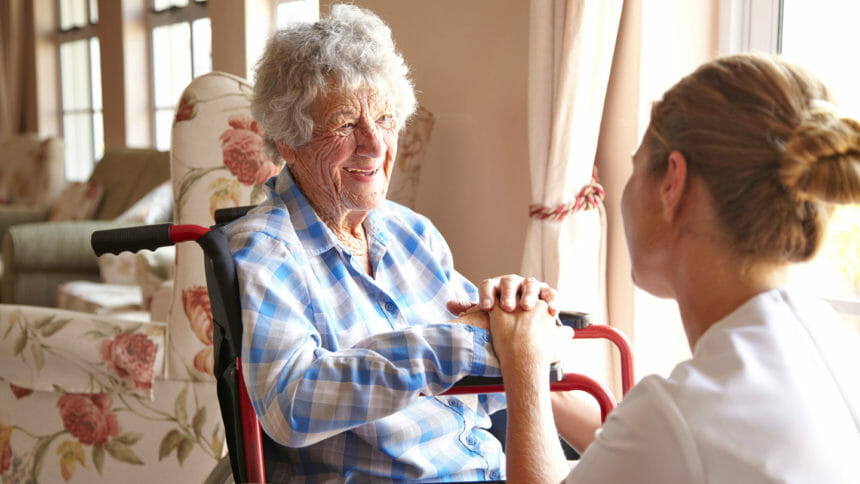
Researchers on Wednesday proposed ways to better identify the most susceptible nursing home candidates in order to ease the expected burden on programs designed to keep the chronically ill and frail elderly at home.
Writing in the Feb. 18 issue of the American Journal of Managed Care, researchers noted that 11% of home- and community-based services patients in the Connecticut Home Care Program for Elders were placed each year in skilled nursing facilities over a five-year period ending in 2010. Chronic mental illness, as well as prior nursing home stays and financial problems, contributed to most admissions to nursing homes from the state program, they observed.
Compounding the expected strain on HCBS in the coming years is the Affordable Care Act. Researchers echoed CMS actuarial predictions that the controversial law will increase Medicaid enrollment by more than 26 million by 2020. The ACA is aggressively pushing long-term care costs away from institutional care and toward HCBS programs.
To lower HCBS attrition rates, researchers suggested CMS consider a plan that would target patients with the highest risk of nursing home placement, including dementia and Alzheimer’s, through stringent pre-admission screening. Alzheimer’s disease, money management dependency, living along and the number of prior short-term skilled nursing stays were top predictors of skilled-nursing care need, they noted.
“Our model could be used as a risk-measurement tool to identify the highest-risk participants and develop targeted care management strategies to improve the effectiveness of HCBS programs,” Melissa A. Greiner, of Duke University Medical Center, and colleagues wrote.




